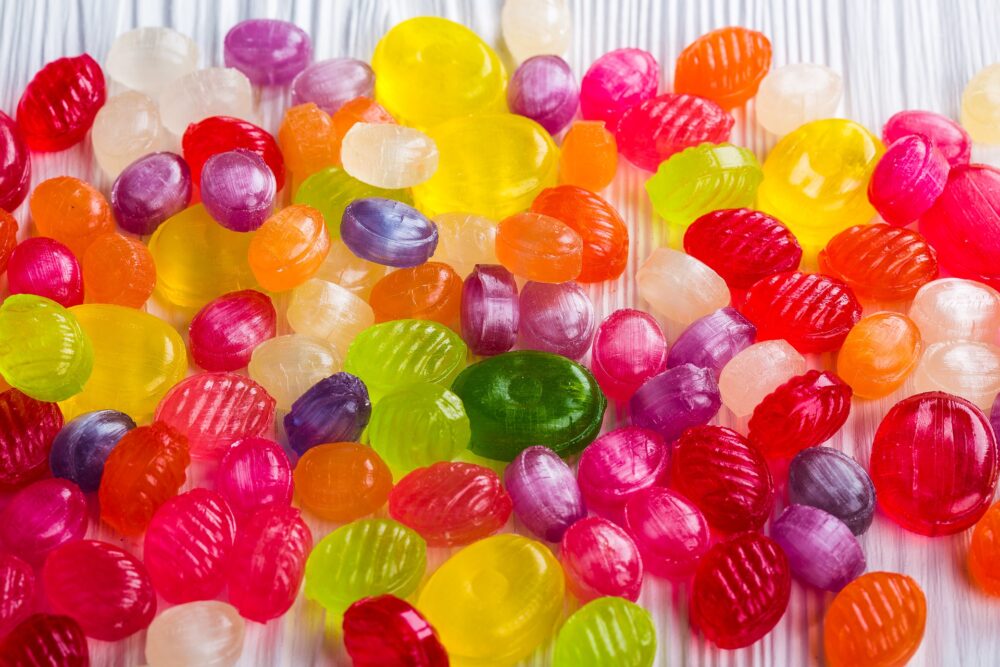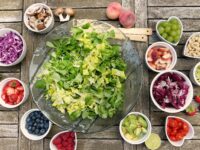Bright blues, radiant reds, and glimmering greens. Thanks to food dyes, we can expect a rainbow of selection each time we enter the grocery store. Not only does the added pigment attract the eye, but it also helps food maintain its shade as it ages as well as produce color-consistency within brands. We can rely on finding the same shade of ketchup no matter the location or season.
However, there is more behind what colors your food than meets the eye. A color additive, as defined by the Food and Drug Administration (FDA), is any dye or pigment that impacts the color of a product. They fall into two categories of additives: synthetic and natural. Synthetic dyes are any color additive not from a natural source. The most popular — Red #40, Yellow #5 ,and Yellow #6 — account for 90 percent of all dyes used and can be found in everything from cereals to crackers to yogurt. Natural dyes are a subgroup of additives with natural sources, such as vegetables, minerals, or bacteria.
Why were synthetic colors used in the first place? Their chemical structure is very stable, making them soluble in water, and able to be implemented at any temperature with the same resulting color. Conversely, natural dyes are much more variable. Because this type of food dye is categorized as anything with a natural source, they differ widely in pH, temperature, light tolerance, and solubility. They are also much more challenging to implement into a wide range of products than synthetic dyes and are more prone to fading.
Over a decade ago, a study by the University of Southampton linked artificial food dyes with increased hyperactivity symptoms in children.
The FDA certifies artificial dyes as safe and mandates that each batch of dye is certified, but scientists and consumers alike are concerned about side effects from consuming large quantities of these colorings.
Over a decade ago, a study by the University of Southampton linked artificial food dyes with increased hyperactivity symptoms in children. Over 250 children were given juice concentrates containing the equivalent of at least five bags of fun-size Skittles packs. Their activity was monitored and compared to weeks when they consumed no additional artificial dyes. Overall, the mean amount of hyperactivity increased when the children consumed artificial dyes. Shortly after, the European Union (EU) mandated food labels to indicate if products contained one of the six food dyes investigated in the Southampton study. Many brands in Europe also have phased out synthetic dyes entirely.
Since then, additional studies, such as a 2012 meta-analysis in the Journal of the American Academy of Child and Adolescent Psychiatry, have supported the conclusion that food dyes have an effect on hyperactivity in children. However, the U.S has not reacted to this information as rapidly as Europe did. As of now, the FDA website says the agency has “reviewed and will continue to examine the effects of color additives on children’s behavior.” Even researchers investigating the effects of dyes on children can see where the hesitation comes from.
“The literature here is so sparse that on the one hand you can sympathize with those who want to take a wait-and-see attitude,” meta-analysis co-author Joel Nigg said to Scientific American in 2015. “But, on the other hand, when we do look at the literature we have, it’s surprising that we do see effects that seem to be real.”
While foods in America still contain many synthetic dyes, many companies are slowly transitioning to natural substitutes, citing consumer desire to purchase products made with natural dyes. These companies include Kraft (and its iconic orange mac and cheese), Taco Bell, and General Mills. Should the U.S. follow in the EU’s footsteps and take artificial colorings more seriously? Keep watch over your grocery store offerings to find out.
Sources
Journal of the American Academy of Child and Adolescent Psychiatry (2012). DOI: 10.1016/j.jaac.2011.10.015.
The Lancet (2007). DOI: 10.1016/S0140-6736(07)61306-3



